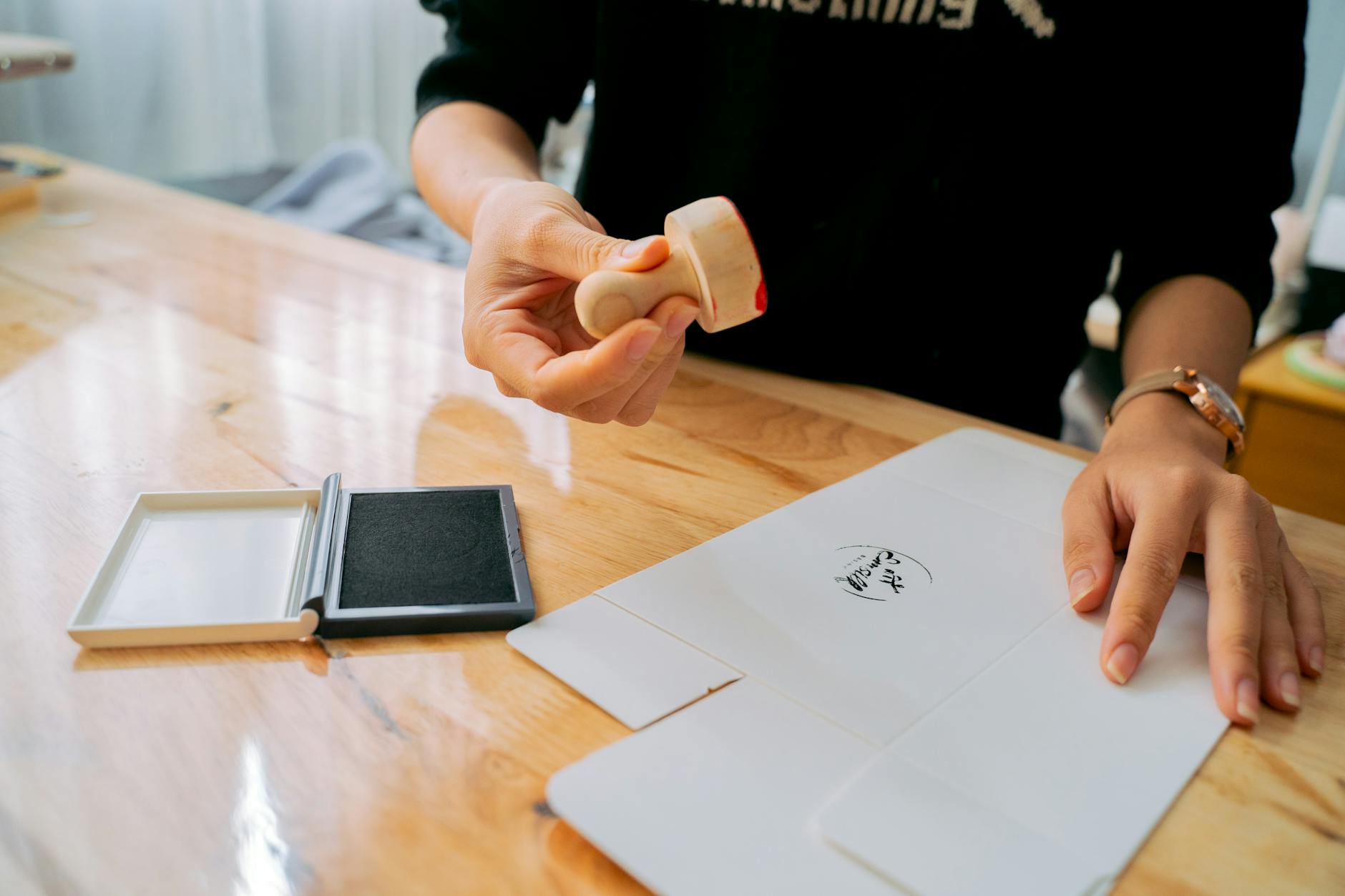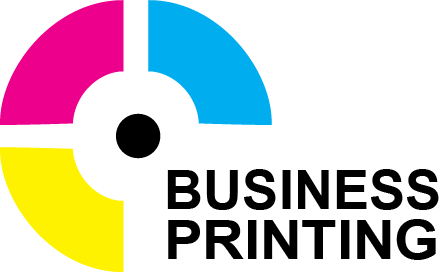Foil stamping turns ordinary print into eye-catching brand statements. With its glossy shine and raised texture, this technique brings packaging and marketing materials to life. It instantly adds class and draws eyes, whether used on a box, a business card, or a brochure.
Foil accents are more than just looks—they help products stand out on the shelf and stick in people’s minds. Gold, silver, or vibrant colored foil signals quality and attention to detail, shaping how your brand is seen. This small touch can shift perception, making even simple materials feel premium.
When done right, foil stamping highlights your brand and builds trust before a customer even opens the package.
Foil stamping is the secret behind those shiny, eye-catching touches that instantly make printed materials feel luxurious. Unlike regular printing that uses ink, foil stamping uses a layer of metallic or colored foil to highlight logos, names, or patterns. The result? A crisp, reflective look you can both see and feel. This method is common on packaging, invitations, and business cards when brands want to stand out and leave a strong impression.
Foil stamping uses heat, pressure, and a custom metal die to apply the foil, creating precise, detailed designs that simply aren’t possible with ink alone. Because the process uses a solid foil layer, the finish is always vibrant and completely opaque—even on dark backgrounds. Now let’s dig into how this process works and what sets each technique apart.
There’s no one-size-fits-all method with foil stamping. Here’s a quick breakdown of the main ways brands add foil to their materials:
1. Hot Foil Stamping
The classic approach. A heated metal die presses the foil against the material with pressure, bonding the shiny layer wherever you want it. This process:
2. Cold Foil Stamping
For bigger jobs or fast turnarounds, printers turn to cold foil stamping. Instead of heat, this method:
3. Digital Foil Stamping
Digital foil merges the best of the foil look with on-demand printing. It’s perfect for short runs, prototypes, or highly personalized jobs. Here’s why brands like it:
Each method has its benefits. Hot foil gives unbeatable texture and detail, cold foil shines for big, fast jobs, and digital foil offers unmatched personalization.
The choice of foil and base material changes everything—from the look and feel to how eco-friendly the final product is. Here’s a quick tour of what’s possible:
Print materials come in all shapes and textures, and foil stamping works on plenty of them:
The smoother the surface, the crisper the foil finish—but textured stocks can add a unique tactile feel. With the right combo of foil and material, brands can unlock unexpected effects that set them apart in any aisle or inbox.
If you’ve ever picked up a product and found yourself running your fingers over its shiny logo or tracing that raised metallic design, you’ve seen foil stamping doing its work. Foil stamping isn’t just about making things look good. It shapes how people recognize and remember your brand. The mix of shine, touch, and depth goes beyond the visual—it sparks emotion, makes a product stand out, and signals quality before a single word is said.

Hands using a stamp on paper at a wooden table, emphasizing craftsmanship.
Photo by Anna Tarazevich
Metallic finishes and foil highlights catch light and turn a package, business card, or label into a conversation starter. Foil stamping literally raises details—embossed logos or patterns pop against matte backgrounds, making the experience hands-on from the first touch.
When customers interact with foil-stamped materials, they connect with your brand on more than just a visual level. Texture and shine tap into emotion, setting your brand apart in a crowded market.
Foil stamping has long been a favorite for brands wanting to look—and feel—premium. Think of the last time you saw a bottle of whiskey with gold foil on its label, or a high-end beauty box glinting on the shelf. That’s not by chance. Foil accents communicate more than style—they send a clear message of trust, value, and exclusivity.
Brands like Clinique, Ralph & Russo, and luxury liquor companies use foil stamping not just for aesthetics, but as a strategic tool to reinforce their place in the market. Foil is more than just decoration—it’s a shortcut to the customer’s trust and a strong position as a premium player. Foil finishing says, “We’re established. We’re worth your investment.”
By working visual and tactile elements into your branded materials, foil stamping helps shape how people perceive your business before they even try your product.
Foil stamping is not just a finishing touch—it’s a tool to make any brand impossible to ignore. When used on packaging, business cards, tags, and even invitations, foil creates a powerful mix of shine, color, and raised textures that instantly draws eyes and fingers. These little details create stronger first impressions and help products pop off the shelf, wallet, or mailbox. Let’s look at how real brands use foil to achieve unforgettable results, and how custom foil choices speak volumes about their message.
Many top brands turn to foil stamping to set their products apart. Here are a few standout examples:

Organic cosmetic packaging with natural elements and stamp on white background.
Photo by Misolo Cosmetic
Foil stamping goes far beyond good looks. For high-value items like bank cards, branded hang tags, or security seals, holographic foil stamping prevents counterfeiting and ensures authenticity—an essential for pharmaceuticals, electronics, and limited-edition releases.
Success with foil stamping comes from thoughtful choices. Brands tailor every detail to highlight what’s important about them and their message. How does this look in action?
Fine details—color, shine, placement—are never random. These are all tools to connect with the right customers, reinforce value, and keep a brand top-of-mind (and top-of-list) in a crowded market. With so much flexibility, foil stamping supports both consistency and creative risk-taking, letting brands refresh looks without losing recognition.
Foil stamping is more than a visual upgrade—it’s a complex process shaped by changing technology and growing demand for sustainability. As brands aim for standout materials, it’s important to look at both the technical side of production and how the industry is innovating for a greener future. Let’s dig into new solutions for common challenges and see how eco-friendly foils are moving from trend to norm.
When creating foil-stamped materials, precision and efficiency matter just as much as looks. Here’s how brands and manufacturers tackle the most common hurdles:
Registration and Alignment
Small misalignments can turn premium materials into costly rejects. Manufacturers now use digital controls and automated sensors, making fine adjustments on the fly. This tech ensures perfect alignment, even with complex, multi-foil designs or when pairing foil with embossing.
Production Speed
Traditional hot foil stamping took time, heating up dies and pressing each piece. Today, digital hot and cold foil systems offer faster setup and run times. Digital foil stamping especially shines for short runs, variable designs, and rush jobs—no metal dies needed, just a digital file.
Substrate Compatibility
Not every material handles heat, pressure, or adhesives well. Luckily, the rise of cold foil stamping, UV-curable adhesives, and new foil types means brands can now use foil on recycled paper, textured board, plant-based films, and more. Digital foil is also less fussy about surfaces.
Innovative Approaches for 2025 and Beyond
By mixing precision tech and fresh processes, foil stamping is faster, more reliable, and flexible for all kinds of creative ideas.

Detailed close-up of rolled paper sheets, ideal for eco-friendly projects or recycling concepts.
Photo by Brett Sayles
Sustainability isn’t a buzzword—it’s a requirement. The foil stamping industry now makes it easy for brands to look great and do good. Here’s what’s happening:
Key Takeaways:
Today, brands no longer have to pick between high-end looks and a clear conscience—foil stamping gives them both. Sustainability doesn’t mean giving up on wow factor. It’s the new way to shine.
When it comes to making your brand shine—literally—foil stamping has no equal. But not every foil stamped product leaves a lasting mark. Brands that get the most value from this tactile, eye-catching technique follow a few tried-and-true rules. Let’s break down the steps to help your brand stand out, drive engagement, and boost ROI with foil stamping.
Clean designs work best with foil. The reflective properties make simple logos, bold names, and clear icons pop way more than busy patterns or tiny text. Pick the most important brand elements and let them shine.
Foil comes in countless colors and finishes. Choose what fits your brand, not just what looks fancy.
Strategic placement takes your piece from ordinary to unforgettable. Pick spots that matter.

A minimalist silver candy wrapper mockup on a white background, perfect for branding.
A minimalist silver candy wrapper mockup on a white background, perfect for branding. Photo by Mediamodifier
Layering techniques creates more memorable, touchable, and engaging pieces. Don’t stop at foil alone:
Keep your foil use consistent—from business cards to packaging to digital assets. Consistency builds trust and recognition.
Today’s foil stamping doesn’t mean sacrificing sustainability. Ask about:
What feels great in theory might not deliver in practice. Always test:
You can’t improve what you don’t measure. Track how foil stamping impacts key business metrics.
Nothing does “premium” like a well-placed flash of foil. Use it to make the moment feel special—whether that’s opening a new product, handing over a business card, or receiving a wedding invitation.
By following these best practices, you get the full value out of every shiny, tactile accent. Foil stamping isn’t only about shine—it’s a tool that, when used right, turns ordinary touchpoints into real brand-building moments.
Foil stamping does more than add a shiny logo or a flash of color—it builds brand experiences people remember. A hint of gold or a bold metallic accent signals quality and care before a word is read or a package is opened. The right use of foil draws a customer’s eye, invites them to touch, and makes every piece feel a little more special.
Strong brands understand these moments add up. A foiled card or box isn’t just good-looking—it tells your story, earns trust, and puts your product top of mind. The best part? With today’s eco-friendly options and creative flexibility, foil stamping fits almost any brand goal.
Thanks for reading! If you’ve noticed a foil finish that caught your attention or changed how you saw a product, share it below. Your insight helps others see the value these details bring to real-world branding. Keep following for more tips that give your materials the edge they deserve.
